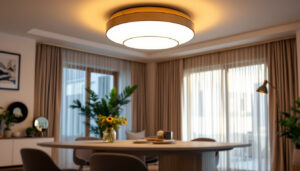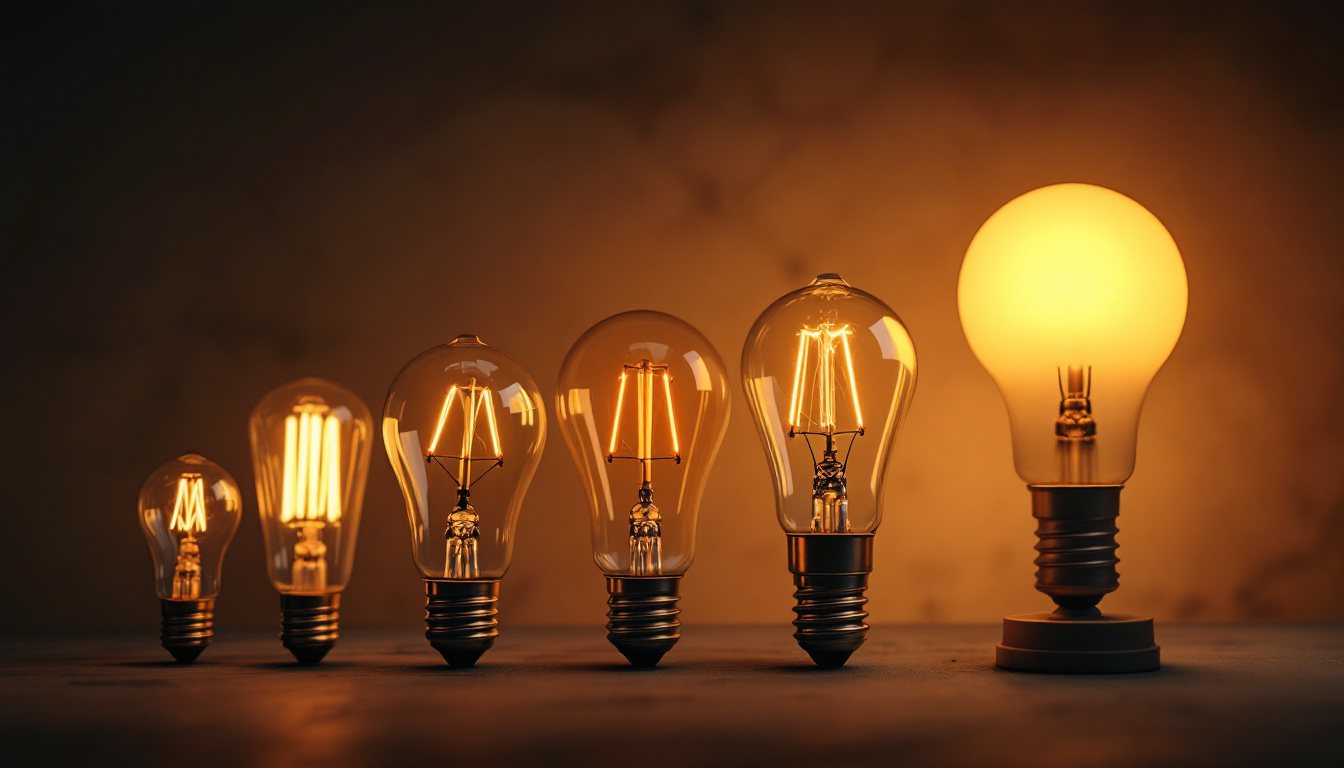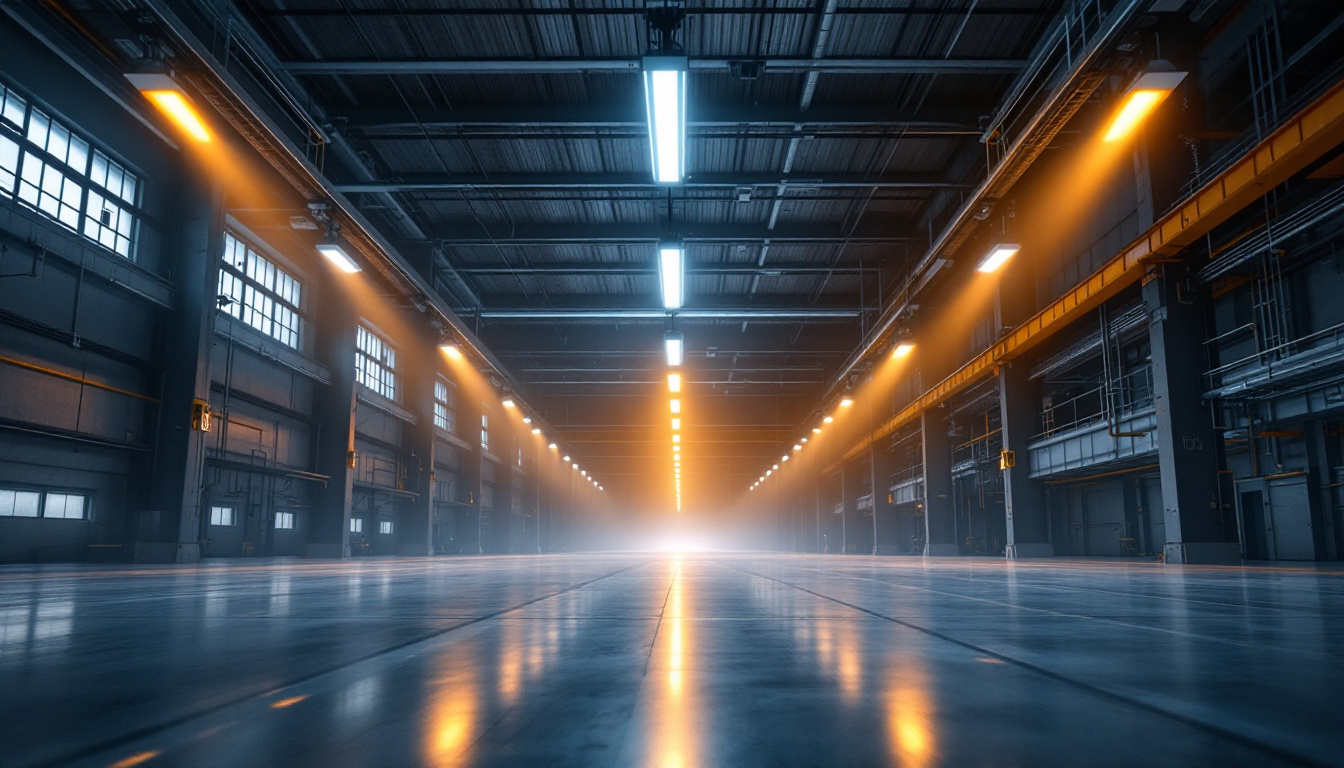

Over the years, the lighting industry has undergone a remarkable transformation, driven by technological advancements, changing consumer preferences, and a growing emphasis on energy efficiency. Standard light bulbs, once dominated by incandescent designs, have evolved into a diverse array of options, each offering unique benefits and applications. This article delves into the evolution of standard light bulbs, exploring their journey from traditional incandescent bulbs to modern LED technologies.
The incandescent bulb, invented in the 19th century, marked a significant milestone in lighting technology. This simple yet effective design utilizes a filament that glows when an electric current passes through it, producing light. The widespread adoption of incandescent bulbs transformed the way people illuminated their homes and businesses, providing a warm and inviting glow that became synonymous with comfort. The invention is often credited to Thomas Edison, who developed a practical and long-lasting version of the bulb in 1879, though many inventors, including Joseph Swan, contributed to its evolution. Edison’s successful demonstration of the bulb in Menlo Park, New Jersey, captivated the public and laid the groundwork for the electric lighting revolution.
Despite their popularity, incandescent bulbs have several drawbacks, including low energy efficiency and a relatively short lifespan. These limitations prompted the search for alternative lighting solutions that could meet the growing demand for brighter, longer-lasting, and more energy-efficient options. The energy consumption of incandescent bulbs is particularly notable; they convert only about 10% of the energy they use into visible light, with the rest lost as heat. This inefficiency not only leads to higher electricity bills for consumers but also raises concerns about the environmental impact of widespread energy use. As a result, researchers and engineers began to explore new technologies that could illuminate spaces without the drawbacks associated with incandescent lighting.
In response to the limitations of incandescent bulbs, fluorescent lighting emerged as a viable alternative. Fluorescent bulbs operate by passing an electric current through a gas, which produces ultraviolet light that excites a phosphor coating inside the bulb, resulting in visible light. This technology offered significant advantages, including increased energy efficiency and a longer lifespan compared to incandescent options. Fluorescent bulbs can last up to 10 times longer than traditional incandescent bulbs, making them a more economical choice for both residential and commercial applications. Additionally, they consume about 75% less energy, which significantly reduces electricity costs and carbon footprints.
Fluorescent lighting quickly gained traction in commercial settings, where the need for cost-effective and efficient lighting solutions was paramount. However, the technology was not without its challenges. The harsh, cold light produced by fluorescent bulbs was often criticized for lacking the warmth and ambiance that many consumers desired in residential settings. Furthermore, the flickering effect of some fluorescent lights could cause discomfort for sensitive individuals, leading to a push for more user-friendly lighting options. As manufacturers sought to improve the quality of fluorescent lighting, advancements in technology led to the development of electronic ballasts, which helped reduce flicker and improve overall performance.
To address the shortcomings of traditional fluorescent lighting, compact fluorescent lamps (CFLs) were introduced. These smaller, spiral-shaped bulbs provided the energy efficiency of fluorescent technology in a more compact form, making them suitable for a wider range of applications. CFLs quickly became a popular choice for homeowners seeking to reduce their energy consumption while maintaining a familiar light quality. Their versatility allowed them to fit into standard light fixtures, making the transition from incandescent bulbs to CFLs relatively seamless for consumers. Additionally, the introduction of dimmable CFLs further expanded their appeal, enabling users to create the desired atmosphere in their spaces.
Despite their advantages, CFLs also faced criticism due to their longer warm-up times and the presence of mercury, which raised environmental concerns. The mercury content, although minimal, necessitated careful disposal to prevent environmental contamination. As consumers became more aware of these issues, the lighting industry continued to innovate, paving the way for the next generation of lighting solutions. The development of LED technology began to gain momentum, promising even greater energy efficiency, longer lifespans, and a more environmentally friendly profile. As the market evolved, LEDs began to emerge as a formidable competitor to both incandescent and fluorescent lighting, setting the stage for a new era in illumination.
Light Emitting Diodes (LEDs) represent one of the most significant advancements in lighting technology in recent decades. Initially used in electronic displays and indicators, LEDs have evolved into a versatile lighting solution that offers exceptional energy efficiency, longevity, and design flexibility. Unlike incandescent and fluorescent bulbs, LEDs produce light through a semiconductor process, resulting in minimal heat generation and significantly lower energy consumption.
As the technology matured, LED bulbs became increasingly accessible and affordable for consumers. This shift not only revolutionized residential lighting but also opened up new possibilities for commercial and industrial applications. The ability to produce a wide range of colors and intensities further enhanced the appeal of LEDs, making them a popular choice for both functional and decorative lighting.
The energy efficiency of LED technology has had a profound impact on the lighting industry and the environment. Compared to traditional incandescent bulbs, LEDs consume up to 80% less energy, leading to reduced electricity bills for consumers and lower greenhouse gas emissions. As energy efficiency regulations became more stringent, the transition to LED lighting was not just a trend but a necessity for many businesses and homeowners.
Moreover, the longevity of LED bulbs—often lasting up to 25,000 hours or more—means less frequent replacements, which contributes to reduced waste and a smaller environmental footprint. As sustainability becomes a priority for consumers, the demand for energy-efficient lighting solutions continues to grow.
The integration of smart technology into lighting systems has further transformed the landscape of standard light bulbs. Smart bulbs, which can be controlled remotely via smartphones or smart home systems, offer unparalleled convenience and customization. Users can adjust brightness, color, and scheduling to suit their preferences, creating dynamic lighting environments that enhance both functionality and aesthetics.
This shift towards smart lighting not only improves user experience but also contributes to energy savings. By allowing users to control their lighting more effectively, smart systems can help reduce energy consumption and lower costs. As the Internet of Things (IoT) continues to expand, the potential for innovative lighting solutions will only increase.
While the evolution of standard light bulbs has brought about numerous benefits, it has also presented challenges for lighting contractors and consumers alike. Understanding these challenges is essential for making informed decisions about lighting solutions.
As new lighting technologies emerge, compatibility with existing fixtures and systems can become a concern. For instance, retrofitting older fixtures to accommodate LED bulbs may require additional components or modifications. Lighting contractors must stay informed about the latest technologies and their compatibility with various systems to provide the best solutions for their clients.
Moreover, the installation of smart lighting systems can present unique challenges. Ensuring proper connectivity and functionality often requires a deeper understanding of both electrical systems and network configurations. As smart lighting becomes more prevalent, contractors must be equipped with the necessary skills to navigate these complexities.
Another challenge facing the lighting industry is the need for consumer education. With so many options available, consumers may feel overwhelmed when selecting the right lighting solutions for their needs. Lighting contractors play a crucial role in guiding clients through the decision-making process, helping them understand the benefits and limitations of different technologies.
Effective communication about energy efficiency, lifespan, and performance can empower consumers to make informed choices. By providing clear information and recommendations, contractors can foster trust and build long-term relationships with their clients.
As the lighting industry continues to evolve, the future of standard light bulbs is likely to be shaped by ongoing advancements in technology and changing consumer preferences. The demand for energy-efficient, sustainable, and customizable lighting solutions will drive innovation and influence product development.
Emerging technologies, such as organic light-emitting diodes (OLEDs) and advancements in smart lighting, are poised to further revolutionize the industry. OLEDs, for instance, offer the potential for ultra-thin, flexible lighting solutions that can be integrated into various applications, from architectural lighting to wearable devices.
As sustainability becomes a central focus for consumers and policymakers alike, the lighting industry will need to adapt to new energy regulations and environmental standards. The push for greener solutions will likely accelerate the adoption of energy-efficient technologies, including LEDs and smart lighting systems.
Contractors will play a vital role in this transition by helping clients navigate the complexities of energy regulations and providing sustainable lighting solutions that align with their goals. By staying informed about industry trends and best practices, contractors can position themselves as trusted advisors in the evolving landscape of lighting technology.
The future of standard light bulbs will also be characterized by a focus on consumer-centric innovations. As consumers seek personalized and customizable lighting experiences, manufacturers will need to prioritize user-friendly designs and intuitive interfaces. This shift towards consumer-centric products will likely drive the development of smart lighting solutions that seamlessly integrate into everyday life.
By embracing innovation and prioritizing consumer needs, the lighting industry can continue to thrive in an ever-changing market. Contractors who stay ahead of these trends will be well-positioned to meet the demands of their clients and contribute to the ongoing evolution of lighting technology.
The evolution of standard light bulbs reflects a dynamic interplay of technology, consumer preferences, and environmental considerations. From the humble incandescent bulb to the sophisticated LED and smart lighting solutions of today, the lighting industry has come a long way. As the demand for energy-efficient and sustainable lighting continues to grow, contractors must remain adaptable and informed to provide the best solutions for their clients.
By understanding the history and future of lighting technology, contractors can offer valuable insights and recommendations that enhance the lighting experience for consumers. The journey of standard light bulbs is far from over, and the possibilities for innovation and improvement are limitless.
As you navigate the ever-evolving world of lighting technology, choose LumenWholesale for your lighting needs. We provide contractors with the highest quality, spec-grade lighting products at unbeatable wholesale prices, ensuring that you can keep up with the latest trends and demands in energy-efficient and sustainable lighting. With our extensive selection that meets rigorous industry standards, you’ll find the perfect lighting solutions for any project. Plus, our hassle-free bulk buying and free shipping mean you get the best value without any hidden fees. Elevate your lighting game and experience wholesale lighting at the best value with LumenWholesale.

Discover essential best practices for lighting contractors working with linear high bay fixtures.

Explore the essential insights every lighting contractor needs to know about recessed can lights.

Discover the essential guide to electric outlets tailored for lighting contractors.

Discover the essential guide for lighting contractors on selecting and installing switches.
Get notified when NEW deals are released.
Optimize your budget with wholesale discounts.
Only top-quality, specification-grade lighting products.
No additional costs at checkout - what you see is what you pay.
We understand the unique needs of contractors.